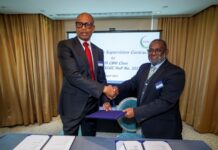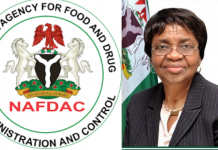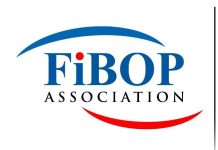
The Accident Investigation Bureau (AIB) has released four final accident and serious incident reports (Details below) reports involving a Tampico TB-9 aircraft owned and operated by the Nigerian College of Aviation Technology (NCAT), a Chanchangi Airlines’ Boeing 737-282 aircraft, a Beechcraft C90 aircraft belonging to Shoreline Energy International Ltd, and a Boeing 747-200 aircraft operated by Veteran Avia Airlines Limited.
Presenting the reports at a press conference in Abuja yesterday, the commissioner and chief executive officer of AIB, Mr. Akin Olateru stated that under his management, “timely release of reports have been crucial to the delivery of our mandate of investigating air accident and serious incidents with the aim of forestalling such occurrence from reoccurring.”
He said with the four additional reports, “AIB has so far released a total of 54 final reports since its establishment in 2007 and a total of 35 final reports have been released since the inception of the current administration of the bureau.”
He also announced that nine safety recommendations are released along with the four reports.
He said safety recommendations “are very important towards preventing recurrence of such accidents or serious incidents when the recommendations are implemented.
All together, he said “these nine safety recommendations make a total of 196 safety recommendations released since the inception of AIB-N and a total of 115 Safety Recommendations released under the current administration.”
Olateru also disclosed that before the end of 2020, the agency will release an additional three final reports and two safety bulletins to the public.
The reports
- Report on the accident involving a Tampico TB-9 aircraft owned and operated by the Nigerian College Of Aviation Technology (NCAT) marked 5N-CBJ which occurred at Zaria Aerodrome, Kaduna State On 26th September, 2018;
Synopsis
Accident Investigation Bureau (AIB-N) was notified of the accident at 10:10 h on the day of occurrence by the Nigerian College of Aviation Technology (NCAT) through a phone call. Safety Investigators were mobilized and arrived NCAT at about 18:30 h on the same day.
On 26th September, 2018 at 09:28 h, a Tampico TB-9 aircraft operated by Nigerian College of Aviation Technology (NCAT) Zaria, with nationality and registration marks 5N-CBJ departed Zaria aerodrome Runway (RWY) 23 on a visual flight rule (VFR) flight plan with an endurance of four hours. The Student Pilot (SP), as the only person on board, was scheduled to perform five take-offs and landings using the 180° glide manoeuvre.
At 09:32 h, during the first circuit, the aircraft touched down on RWY 23 at about 121 m from the threshold and veered off to the left, exiting the RWY at 184 m from the threshold into the waterlogged grass area. The aircraft came to a final stop at a perpendicular distance of 73 m from the RWY centre line. The SP exited the aircraft without injury.
This investigation identified the following causal and contributory factors:
Causal factor
Late decision to initiate a go-around after touchdown which resulted in loss of directional control of the aircraft after landing.
Contributory factors
Inappropriate control inputs during landing roll
Intermittent interruptions in training program
One safety recommendation was made
Safety Recommendation 2020-022
The Nigerian College of Aviation Technology should ensure that where there are gaps in student pilots’ training, Policies and Procedures should be put in place in the training programme so that the students are brought up to speed in both theory and practice.
- Report on the accident involving a Boeing 737-282 owned and operated by Chanchangi Airlines Ltd marked 5N-BIG which occurred at Port Harcourt International Airport on 14th July, 2008;
Synopsis
Accident Investigation Bureau (AIB-N) received notification of the accident on the 14th July, 2008 and investigation commenced on the 15th July, 2008.
On 14th July, 2008 at 16:49 h, a Boeing 737–282 aircraft with nationality and registration marks 5N-BIG, operated by Chanchangi Airlines Ltd, commenced a scheduled domestic flight from Murtala Muhammed International Airport, (DNMM) with call sign NCH138 for Port Harcourt International Airport (DNPO).
Instrument Flight Rules (IFR) flight plan was filed for the flight. There were 47 persons on board (41 passengers, 2 flight crew and 4 flight attendants) and 3 hours fuel endurance. The Captain was the Pilot Flying (PF) and the First Officer (FO) was the Pilot Monitoring (PM).
At 18:45 h, NCH138 reported five miles to touchdown. Approach Control acknowledged and instructed NCH138 to report field in sight and subsequently handed over to Tower on 119.2 MHz. When contacting the Tower, NCH138 was cleared to land on RWY 21, wind 0100/10 kt and was advised to exercise caution due to wet runway. NCH138 acknowledged the clearance.
NCH138 landed hard and bounced three times on the runway. According to the ATC controller, after touch down the aircraft rolled in an s-pattern before it overran the runway. NCH138 made a 180° turn with the right engine hitting the ground. The aircraft came to a final stop on the left side and 10 m beyond the stop way.
The accident occurred at night in Instrument Meteorological Conditions (IMC). The Aerodrome Rescue and Fire Fighting Service (ARFFS) arrived the scene and commenced rescue operations immediately.
All occupants on board were evacuated; one passenger sustaining a minor injury.
The investigation identified the following causal and contributory factors:
Causal factors
The decision to land following an unstabilized approach (high rate of descent and high approach speed). A go-around was not initiated.
Contributory factors
The deteriorating weather conditions with a line squall prevented a diversion to the alternates.
The runway was wet with significant patches of standing water.
No safety recommendation was made
In view of the issuance of the Nigeria CAR 2009 and the revision in 2015, which addressed the areas of shortcomings identified in this investigation, no safety recommendations are made.
- Report on the accident involving a Beechcraft C90 aircraft marked N364UZ owned and operated by Shoreline Energy Intl Ltd which occurred at Barakallahu village near old Kaduna (Military) Airport On 24th May, 2011;
Synopsis
Accident Investigations Bureau (AIB-N) received notification about the accident on 24 May, 2011 at about 12:30 h; investigators were mobilized.
On 24 May, 2011 at 11:54 h, a Beechcraft C90 aircraft with nationality and registration marks N364UZ, operated by Shoreline Energy International Limited (SEIL), departed Old Kaduna (Military) airport on a test flight with a pilot and another person onboard, with three hours endurance on a visual flight rules (VFR) flight plan.
At 11:59 h, the aircraft crashed on a farm-land 878 meters short of RWY 23 (military) and engulfed into flames. The two occupants were fatally injured.
Dornier Aviation Nigeria AIEP (DANA) and Nigerian Air Force (NAF) fire-fighting personnel were dispatched immediately. There was no direct access between the runway and the accident site, which delayed the fire trucks from reaching the accident site on time.
The accident occurred in day light in visual meteorological conditions (VMC).
The investigation identified the following causal and contributory factors:
Causal factor
Inability of the pilot to control the aircraft to landing due to inadequate power to enable the pilot maintain the appropriate approach profile (height, speed and glide path) to cover the required distance to threshold.
Contributory factors
Non-adherence to approved storage procedure
Non-adherence to approved return from storage procedure
Inadequate regulatory oversight by the authority on flight operation and maintenance of foreign registered aircraft in Nigeria
Four safety recommendations were made
4.1 Safety Recommendation 2020-017
Nigeria Civil Aviation Authority NCAA should increase safety oversight on foreign registered general aviation aircraft operating in Nigerian airspace.
4.2 Safety Recommendation 2020-018
Nigeria Civil Aviation Authority NCAA should promulgate detailed regulations/requirements on private category aircraft operations.
4.3 Safety Recommendation 2020-019
Nigeria Civil Aviation Authority NCAA should liaise with the Old Kaduna (Military) Airport authorities to ensure that 1000 m beyond RWY 23 should be easily accessible in accordance with internationally accepted standard stipulated in ICAO Annex 14.
4.4 Safety Recommendation 2020-020
Nigeria Civil Aviation Authority NCAA should liaise with the Old Kaduna (Military) Airport authorities to ensure that an Airport Emergency Plan (AEP) is developed and maintained in line with Nig.CARs Part 12 (Aerodrome Regulations).
- Report on the accident involving Boeing 747-200 aircraft operated by Veteran Avia Airlines Ltd marked EK-74798 which occurred at the Nnamdi Azikiwe International Airport Abuja 4th December, 2013.
Synopsis
Accident Investigation Bureau (AIB-N) was notified of the occurrence at about 21:30 UTC by Abuja Tower (ATC) on 4th December, 2013. Investigators were deployed to commence investigation into the occurrence.
At 16:47 UTC, the flight Saudia 6814 (SVA6814), departed OEJN for DNAA on an Instrument Flight Rules (IFR) flight plan with an endurance of 6hrs 18mins and estimating DNAA at 21:15 UTC. The Captain was the Pilot Flying (PF) and the First Officer was the Pilot Monitoring (PM). Flight SVA6814 was cleared to FL280 by ATC.
The en-route flight was normal. At 21:14 UTC, SVA6814 reported established on Final Approach and was transferred to Tower (TWR) at 14 nm to touch down RWY 04.
At 21:15 UTC, the aircraft was in contact with TWR on 118.6 MHz and at 10 nm ILS/Localizer was established.
The Crew stated that just before landing, at about 400ft Above Ground Level (AGL), Tower said something about runway length in a garbled manner, which none of the crew could understand. The PM and the Flight Engineer (FE) in their respective statements mentioned that the Captain rechecked the approach chart before landing.
During the landing roll, TWR called the aircraft to “Hold-short Hold-short.” The aircraft turned to the right to avoid the displaced threshold via exit A3; the aircraft veered off to the left of the exit and impacted some construction equipment parked on the side of the Runway.
The aircraft came to a final stop, parallel and to the right of RWY 04 on a grass verge with the fuselage and nose wheel between the construction equipment.
The six crew members evacuated the aircraft unhurt via Avionics compartment through the Main Electronic service door behind the nose wheel.
There was fire, which was extinguished by Airport Rescue and Fire Fighting Services (ARFFS).
The accident occurred at 21:19 UTC, night time.
The investigation identified the following causal and contributory factors:
Causal factor
Crew was not updated on the information available on the reduced runway length
Contributory factors
Lack of briefing by Saudia dispatcher during pre-flight.
Runway status was missing from Abuja ATIS information.
Ineffective communication between crew and ATC on short finals.
The runway markings and lighting not depicting the displaced threshold
The entire runway lighting was ON beyond the displaced threshold
Four safety recommendations were made.
4.1 Safety Recommendation 2020-014
Nigerian Airspace Management Agency (NAMA) should:
Capture all essential information on the Automatic Terminal Information Services (ATIS).
4.2 Safety Recommendation 2020-015
Federal Airports Authority of Nigeria (FAAN) should:
Ensure that light at any displaced portion of the runway be switched off so as not to mislead any arriving/landing traffic.
4.3 Safety Recommendation 2020-016
Federal Airports Authority of Nigeria (FAAN) should:
Ensure that runway obstructions, and/or runway displaced thresholds are marked/lit in accordance with DNAA Airside Operations Manual and Aerodrome Manual sections 4.10.7a and 4.13.3.4 respectively and communicated on time through NOTAMs to stakeholders.
Safety Recommendation 2020-021
Veteran Avia should ensure that its operations are in conformity with the approved procedures established in accordance with company manuals.


























































